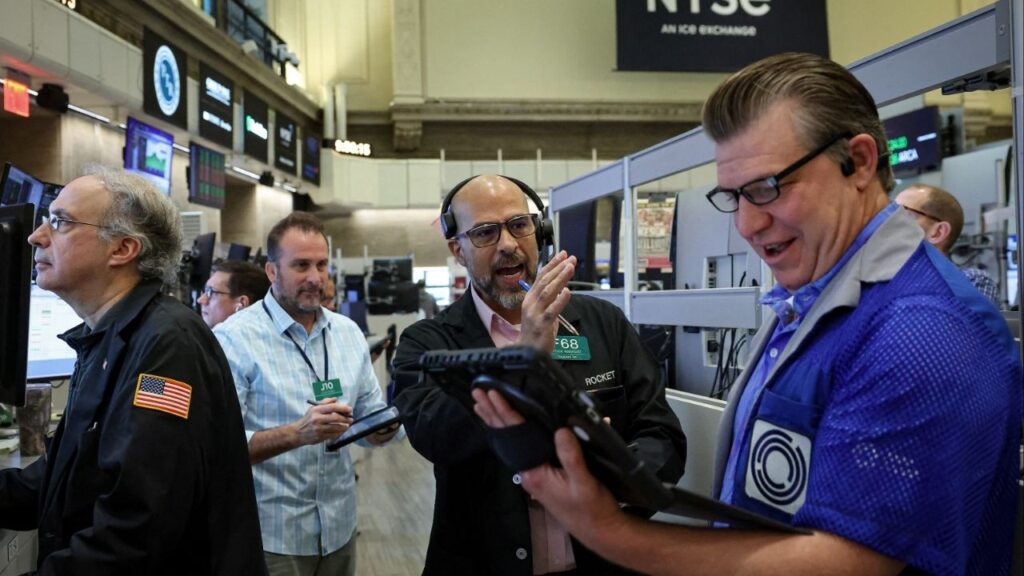Looming dockworkers strike threatens to disrupt East and Gulf ports, raising concerns for holiday shopping and supply chains. (AP File)

- Dockworkers union demands higher wages and automation ban, threatening first strike since 1977 at 36 U.S. ports.
- Retailers adapt to potential disruptions by securing early orders and diversifying shipping partners to mitigate strike impact.
- Toy industry faces critical challenge as strike coincides with peak holiday shipping season, risking product shortages and price hikes.
Share
|
Getting your Trinity Audio player ready...
|
NEW YORK — U.S. ports from Maine to Texas could shut down Tuesday if a union representing about 45,000 dockworkers carries through with a threatened strike.
A lengthy shutdown could raise prices on goods around the country and potentially cause shortages and price increases at big and small retailers alike as the holiday shopping season — along with a tight presidential election — approaches.
“First and foremost, we can expect delays to market. And those delays depend on really what the commodities are and priorities at the ports and how quickly things move,” said Mark Baxa, president of the Council of Supply Chain Management Professionals.
Related Story: Merced County Avoids Strike, but Concerns Remain Over Healthcare Changes and ...
Issues Behind the Dockworkers Strike
The International Longshoremen’s Association is demanding significantly higher wages and a total ban on the automation of cranes, gates and container-moving trucks that are used in the loading or unloading of freight at 36 U.S. ports. Those ports handle roughly half of the nations’ cargo from ships.
The contract expires between the International Longshoremen’s Association and the United States Maritime Alliance, which represents the ports, on Tuesday. The two sides haven’t held negotiations since June. A strike by the ILA workers would be the first by the union since 1977.
“The Ocean Carriers represented by USMX want to enjoy rich billion-dollar profits that they are making in 2024, while they offer ILA Longshore Workers an unacceptable wage package that we reject,” the ILA said in a statement on Monday.
Related Story: A Strike by Boeing Factory Workers Shows No Signs of Ending After Its First
Affected Ports and Potential Government Intervention
While any port can handle any type of goods, some ports are specialized to handle goods for a particular industry. The ports that would be affected by the shutdown include Baltimore and Brunswick, Georgia, the top two busiest auto ports; Philadelphia, which gives priority to fruits and vegetables; and New Orleans, which handles coffee, mainly from South America and Southeast Asia, various chemicals from Mexico and North Europe, and wood products such as plywood from Asia and South America.
Other major ports affected include Boston; New York/New Jersey; Norfolk, Virginia; Wilmington, North Carolina; Charleston, South Carolina; Savannah, Georgia; Tampa, Florida; Mobile, Alabama; and Houston.
If a strike were deemed a danger to U.S. economic health, President Joe Biden could, under the 1947 Taft-Hartley Act, seek a court order for an 80-day cooling-off period. This would suspend the strike.
But Biden, during an exchange with reporters on Sunday, said “no” when asked if he planned to intervene to plan a potential work stoppage impacting East Coast ports.
“Because it’s collective bargaining, I don’t believe in Taft-Hartley,” Biden said.
Impact on Consumers and Retailers
The strike could last weeks — or months. If a strike were resolved within a few weeks, consumers probably wouldn’t notice any major shortages of retail goods. But a strike that persists for more than a month would likely cause a shortage of some consumer products, although most holiday retail goods have already arrived from overseas. Shoppers could see higher prices on a vast array of goods, from fruit and vegetables to cars.
Since the major supply chain disruption in 2021 caused by pandemic bottlenecks, retailers have adapted to supply chain disrupters being “the new norm,” said Rick Haase, owner of a mini-chain of Patina gift shops in and around the Twin Cities in Minnesota.
“The best approach for Patina has been to secure orders early and have the goods in our warehouse and back rooms to ensure we are in stock on key goods,” he said.
Daniel Vasquez, who owns Dynamic Auto Movers in Miami, Florida, which specializes in importing and exporting vehicles, increased inventory, specifically for vehicles that take longer to ship, in anticipation of a strike.
He has also stopped relying on one port or shipping partner and has expanded his relationship with smaller ports and shipping companies that can bypass congested areas.
“This move provides us with an edge — having backup partners in place means we can reroute shipments efficiently if the strike hits hard,” he said.
Related Story: Longshoremen at Key US Ports Threatening to Strike Over Automation and Pay
Potential Effects on Holiday Shopping
Jonathan Gold, vice president of the supply chain and customs policy at the National Retail Federation, the nation’s largest retail trade group, said the possible strike comes as the supply network continues to face challenges from ongoing Houthi attacks on commercial shipping that have essentially shut down the use of the Red Sea and Suez Canal.
The uncertainty also comes during the peak of retailers’ holiday shipping season, which traditionally runs from July through early November. Many big retailers, anticipating a strike, started shipping their goods to U.S. distribution centers in June, and Gold noted that a majority of products are already in the U.S.
But retailers will have a hard time replenishing items and are incurring extra warehouse costs to store goods longer. Gold also noted that carriers are already announcing surcharges on containers to address potential disruptions.
The Toy Association, the nation’s leading toy trade group, was one of roughly 200 trade groups that sent a joint letter to President Biden earlier this month urging the administration to work with ILA and USMX to come up with a contract. Greg Ahearn, its president and CEO, noted that a strike would happen at an extremely critical time for toy sellers and makers — up to 60% of a toy company’s annual sales come during the fourth quarter. The holiday shipping window for the toy industry is anywhere from six to eight weeks and started in July, though some toy companies tried to ship earlier or add more toys to shipments, he said.
“It hits many ways,” he said. “From a consumer perspective, it starts with delays in availability and then starts to surface as product shortages within toys. At retail for the toy industry, it results in potentially higher prices based on scarcity and increased costs.”
RELATED TOPICS:
Categories

Clovis Hit-and-Run Forces Car Into Light Pole, Injuring Driver

Paramount Says Money Is No Object. Warner Bros. Isn’t Convinced.

















